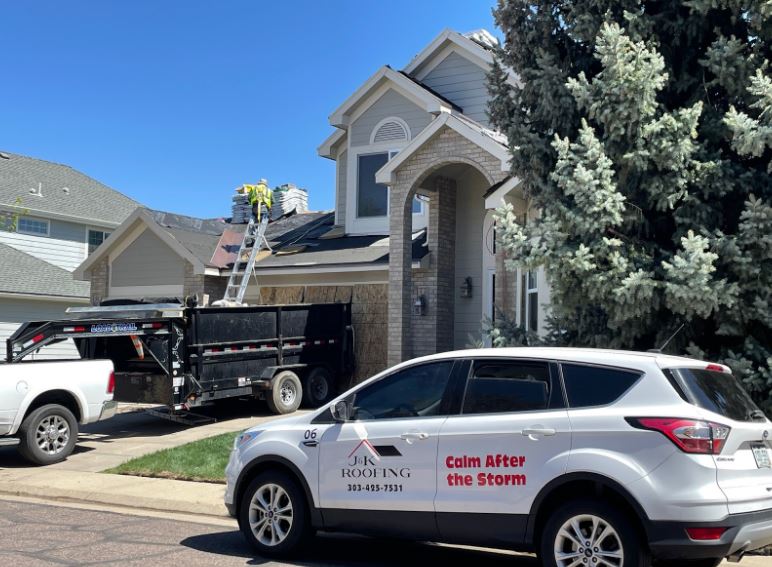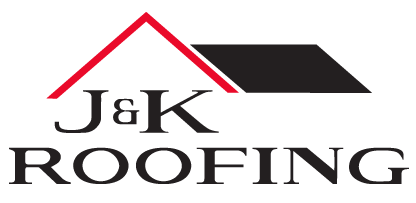
Understanding the Insurance Claims Process for Roofing in Colorado
If you’ve lived in Colorado for a while, you know the odds are good that you may need to file a roofing insurance claim in any given year. That’s because we receive some intense weather during storm season, including heavy hail, strong winds, and a surplus of ice and snow that can add a lot of stress and damage to your roof.
While the process for filing a homeowner’s insurance claim for roofing storm damage may seem overwhelming, it’s not as bad as you think — especially when you break it down into manageable steps. Keep reading for a step-by-step guide to filing a roofing insurance claim in Colorado.
How to File a Roofing Insurance Claim in Colorado
As soon as you become aware of any roofing issues, follow these steps for filing a claim with your homeowners insurance company.
Step 1: Document any roof damage
Take a walk around your house and look for any damage, inside and out. Pay attention to damage to gutters and downspouts, leaks in both your attic and ceilings, siding, windows, doors, exterior paint, damaged or missing shingles, solar issues, and anything else that looks out of place or possibly damaged from a storm.
Step 2: Schedule a damage assessment with a reputable roofing contractor
Research and select a quality roofing contractor. You can use the internet or ask your family and friends for recommendations. The main takeaway is to do your research and avoid falling for any scams. Remember that you’re responsible for hiring the roofing contractor who will repair your roof, so go with the best quality. If they offer a complimentary inspection and honest assessment, you know you’re in good hands.
You’ll want to schedule a roof inspection to verify the damage since you can’t always see the source of specific damage like leaks and moisture buildup in your attic. Damage to your roof can extend to other areas of your home, and a professional roofing inspection is the only way to make sure you’re covering all your bases.
An inspection will provide the required documentation and images for your insurance company to have your full scope of work included if you decide to file an insurance claim. Roof inspections are necessary after storms — they’re just a part of home ownership due diligence.
Step 3: Call your insurance company and file a roofing claim
Review your homeowners insurance policy, then give your insurance company a call. Understand that there are two types of claims: replacement cost and actual cash value. Actual cash value policies are based on the depreciated value of your belongings, and replacement cost coverage doesn’t account for depreciation.
Check with your agent to see what your deductible amount is and what mortgage company is listed on your account (if applicable). You might also check with your homeowners insurance for an incentive to upgrade to impact-resistant shingles.
What about my deductible?
You’ll have to pay your homeowners insurance deductible before your insurance company will cover anything. This applies to all amounts of work—big or small. Bear in mind that as a protective measure for homeowners, Colorado law prevents any roofing company from paying, waiving, or rebating an insurance deductible.
Step 4: Your insurance adjuster and roofing contractor will meet to assess damages
Your roofing company will work with your insurance adjuster to make sure that your estimate includes everything necessary to complete your roofing project. The contractor you choose to hire shouldn’t ask for a deposit before delivery of the materials. Instead, the initial check you receive from your insurance company is intended to cover the cost of the materials and should go to pay your roofing contractor.
It’s also important to note that there’s no statewide roofing license in Colorado. Your chosen contractor should obtain a permit from the local jurisdiction and post it in your front window before beginning the project. Upon project completion, the city or municipality will inspect your roof, and your roofing contractor should provide you with workmanship and material warranty information, as well as proof of a passed final inspection.
One important note to remember is that most insurance adjusters aren’t roofers. Our team at J&K Roofing will meet with your adjuster to review and discuss any issues with your roof to make sure everything is correct and agreeable. As part of this process, you should be told what’s being covered by your insurance company and what your out-of-pocket expenses are, like deductible, upgrades, etc. The plan that your roofing contractor recommends might include a roof supplement. Don’t worry — this is typically part of the process.
Step 5: Insurance claim is approved
Once you learn that your claim has been approved, you’ll want to review it to ensure all work needed for your roofing project is included in your claim. Due to how much is involved in getting a roofing project insurance claim approved, it’s not uncommon for specific aspects to slip through the cracks. Your roofing contractor can help you with this step.
Step 6: Installation of roof and any exterior projects
This is where the real fun begins because it’s the day you’ve been waiting for. Your roofing company will contact you with a project timeframe and general idea of what to expect. They’ll then arrive with the roofing materials they need to get started, likely on the first day of your project timeline. Typically, it takes 1 to 2 days for a new roof installation, based on the size of your project.
Your roofing company will leave a ladder set for the city inspector to access and perform final inspections. It’s important to leave this as-is so the process can be completed.
Step 7: Your contractor will invoice you for the entire amount of your roof project
This is where payment comes into the mix. Remember that you’re responsible for the deductible portion of your project, and it’s illegal under Colorado law for a roofing contractor to pay, waive, or rebate your deductible.
In most cases, if you have a mortgage on your home, you’ll receive several checks from your insurance company made out to both you and your mortgage company. You should start the process to obtain your mortgage company’s endorsement on these checks as soon as possible after you receive your first check. Call your mortgage company early in the process to learn their procedures for endorsing insurance checks.
Don’t Delay Your Roofing Project
After a storm hits or your roof sustains some form of covered damage, you have a limited amount of time to file a claim. Typically, this is one year from the date of damage to file an insurance claim.
When there are widespread hailstorms, it’s important to start work on your project as soon as possible. Don’t wait to get roofing repairs or replacements completed! If you choose to wait until the fall to make sure storm season is over, you might have to wait too long, and you might miss out on product inventory, color availability, or even the availability of your roofing company.
If your roof is leaking, have it repaired as soon as possible to prevent further damage. Schedule a free inspection today with us today. Call 303-425-7531 or click here to get in touch.
